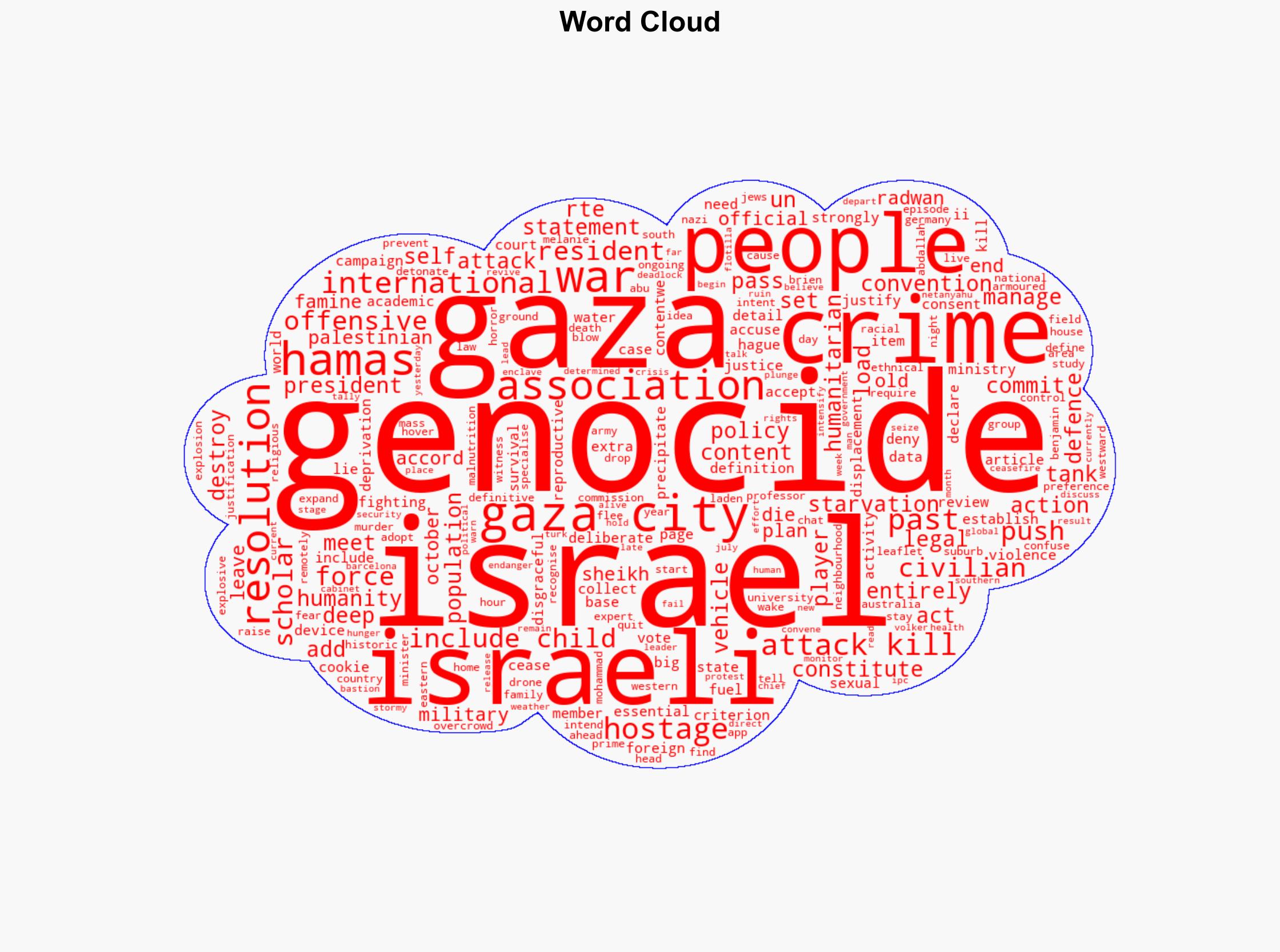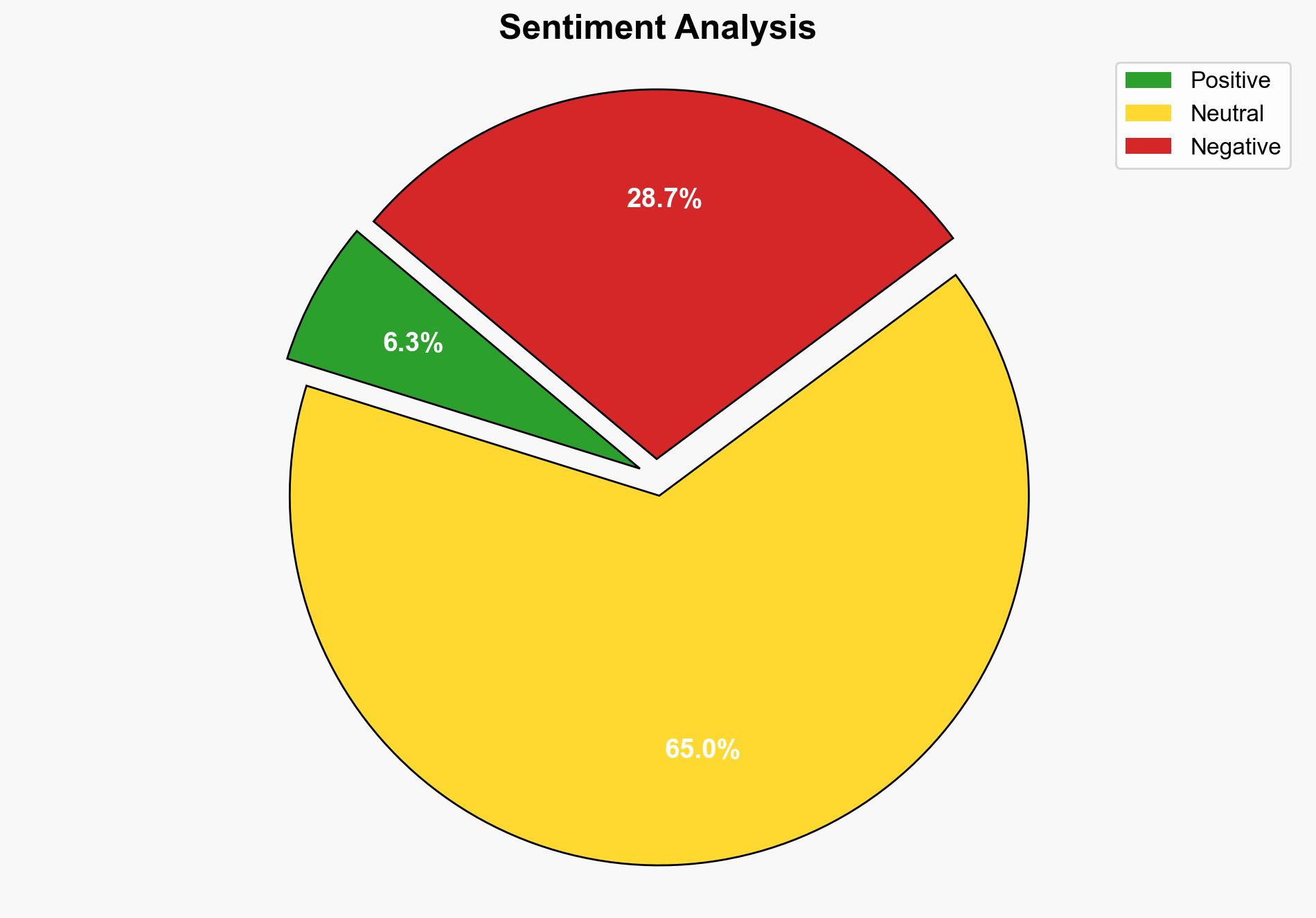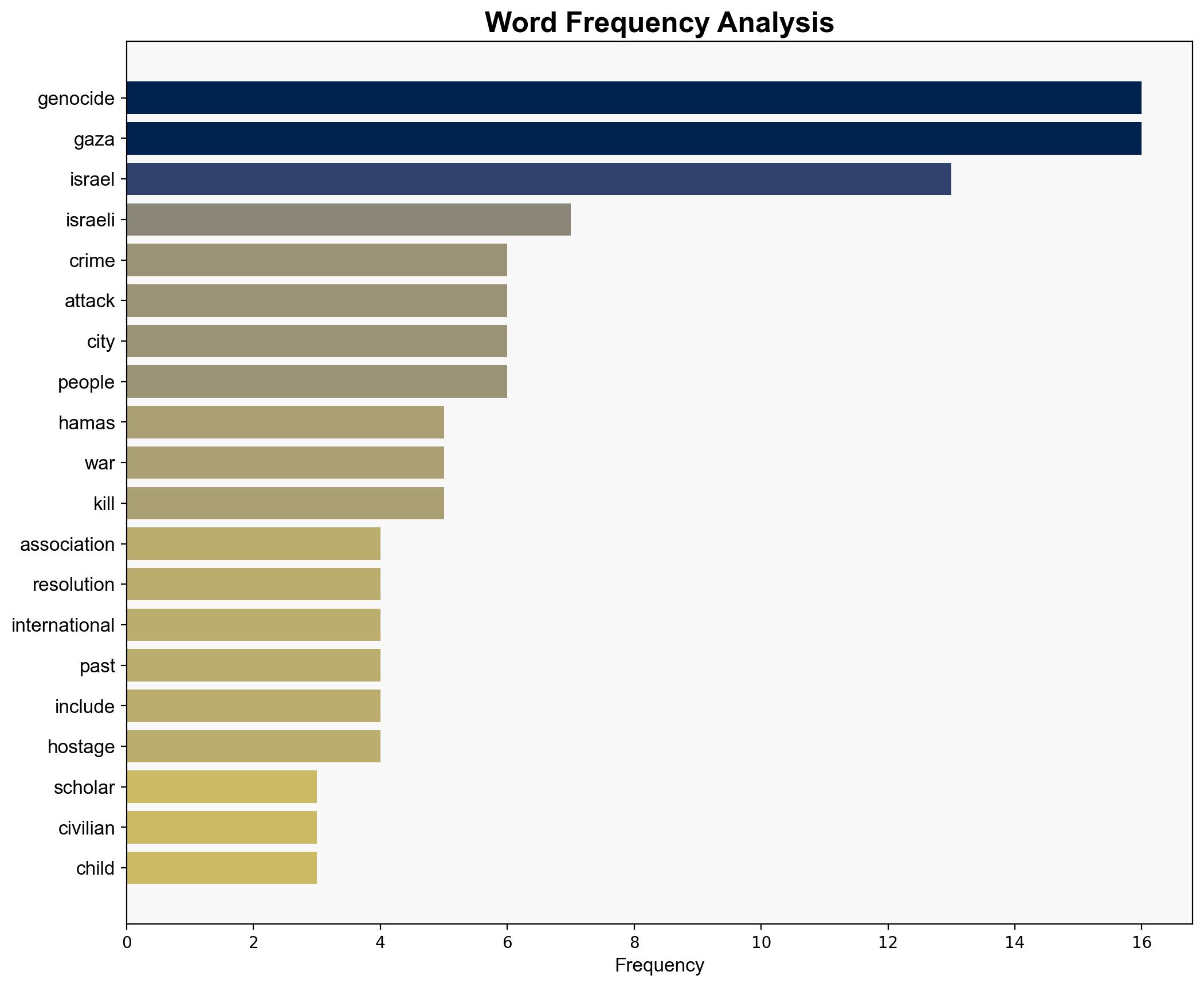Israeli attacks kill 98 tanks push deeper into Gaza City – RTE
Published on: 2025-09-01
Intelligence Report: Israeli attacks kill 98 tanks push deeper into Gaza City – RTE
1. BLUF (Bottom Line Up Front)
The most supported hypothesis is that Israeli military actions in Gaza are primarily driven by self-defense objectives against Hamas, but are resulting in significant humanitarian consequences. Confidence level: Moderate. Recommended action: Engage in diplomatic efforts to de-escalate the conflict and address humanitarian needs.
2. Competing Hypotheses
1. **Hypothesis A**: Israel’s military operations in Gaza are primarily motivated by self-defense against Hamas, with collateral damage being an unintended consequence.
– **Supporting Evidence**: Israel’s historical stance on self-defense, statements from the Israeli government denying genocide, and the context of ongoing hostilities with Hamas.
2. **Hypothesis B**: Israel’s actions in Gaza meet the criteria for genocide as defined by international law, with deliberate targeting of civilians and essential infrastructure.
– **Supporting Evidence**: Resolution by the International Association of Genocide Scholars, reports of civilian casualties, malnutrition, and destruction of infrastructure.
Using ACH 2.0, Hypothesis A is better supported due to Israel’s consistent narrative of self-defense and the lack of direct evidence proving intent to destroy a specific group. However, the humanitarian impact cannot be ignored, lending some credence to Hypothesis B.
3. Key Assumptions and Red Flags
– **Assumptions**: Hypothesis A assumes Israel’s actions are primarily defensive and not intentionally genocidal. Hypothesis B assumes intent behind the military actions that align with the definition of genocide.
– **Red Flags**: The resolution by genocide scholars may be influenced by political biases. The lack of independent verification of claims from either side raises concerns about the reliability of the information.
– **Blind Spots**: Potential underreporting of Hamas’s actions and intentions, and the full scope of humanitarian conditions on the ground.
4. Implications and Strategic Risks
– **Escalation Risks**: Continued military operations may lead to broader regional conflict, drawing in neighboring countries or international actors.
– **Humanitarian Crisis**: The ongoing situation may exacerbate the humanitarian crisis, leading to increased international pressure on Israel.
– **Geopolitical Tensions**: The conflict may strain Israel’s relations with allies and impact its global standing.
5. Recommendations and Outlook
- Engage in diplomatic channels to facilitate a ceasefire and address humanitarian needs.
- Encourage independent investigations to verify claims of genocide and war crimes.
- Scenario Projections:
- Best Case: Successful diplomatic intervention leads to a ceasefire and humanitarian relief.
- Worst Case: Escalation into a broader regional conflict with increased civilian casualties.
- Most Likely: Prolonged conflict with intermittent ceasefires and ongoing humanitarian challenges.
6. Key Individuals and Entities
– Benjamin Netanyahu
– Melanie O’Brien
– International Association of Genocide Scholars
7. Thematic Tags
national security threats, humanitarian crisis, regional conflict, international law





